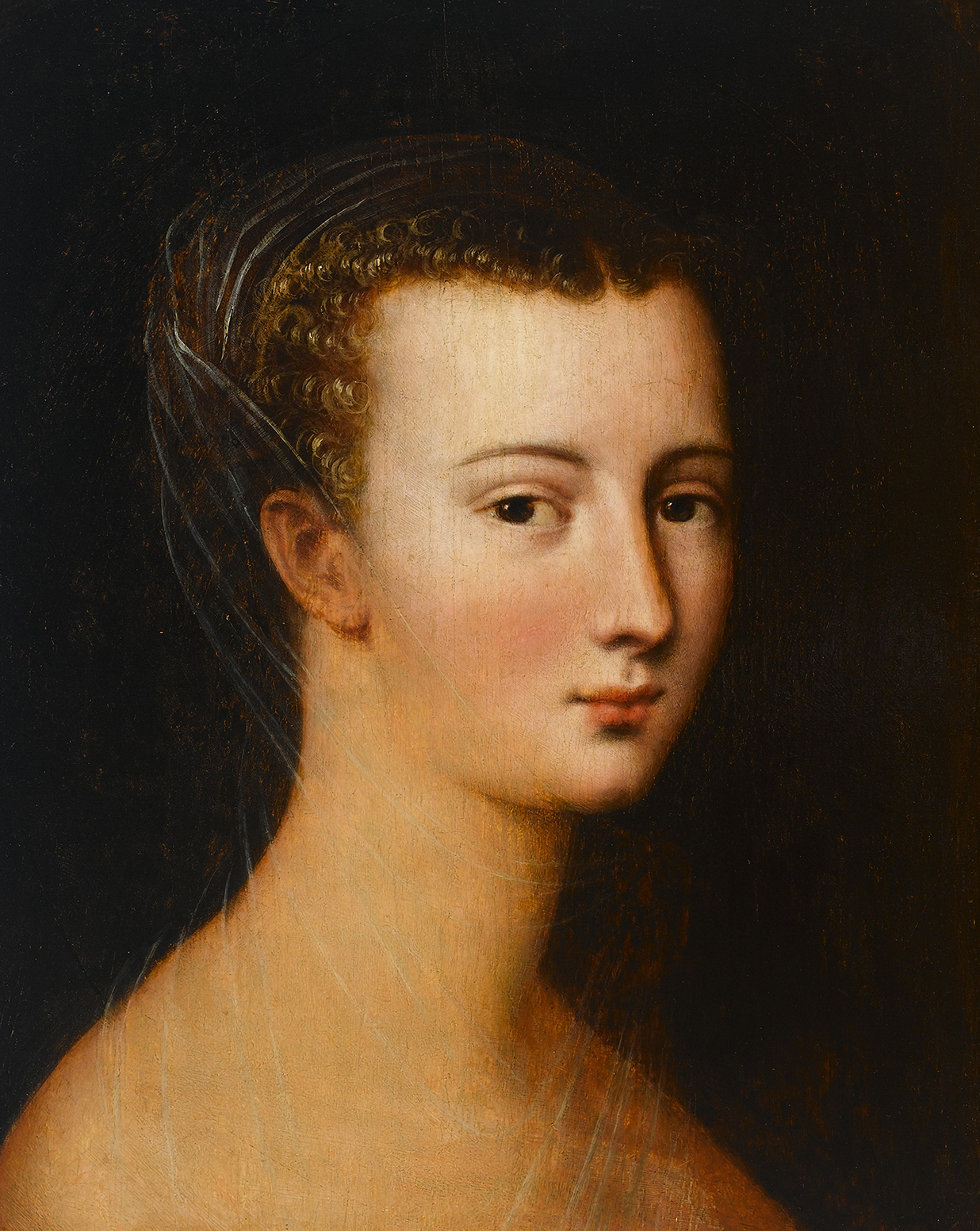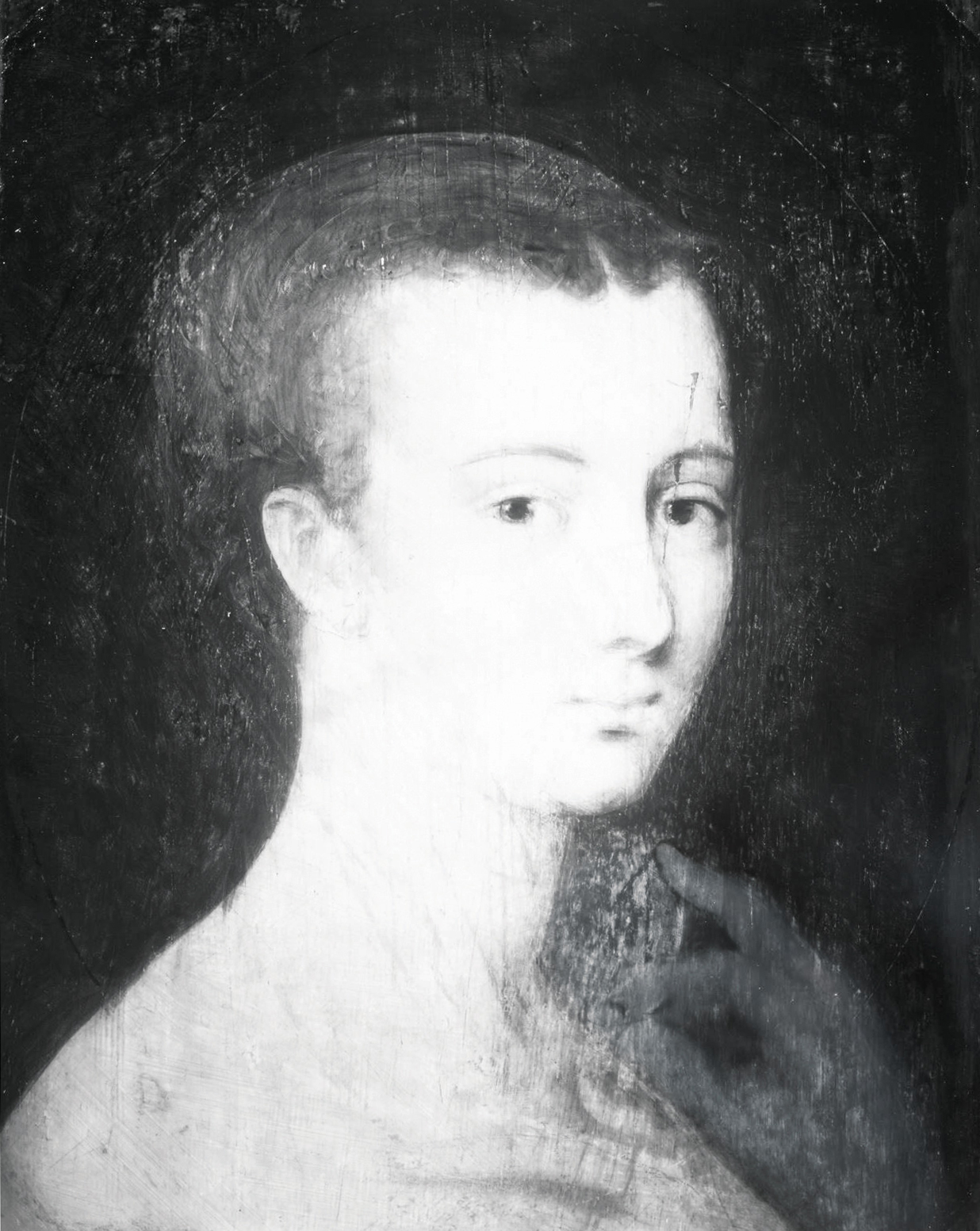

Infrared Reflectography (IRR)
Infrared Reflectography (IRR), which uses the same wavelengths that enable night vision, is another technique adapted to the study of paintings. It is most useful at detecting underlayers, the preparatory phases of the painting process. The carbon-rich charcoal or ink lines of underdrawings, for example, absorb high amounts of infrared energy, and then stand out in sharp contrast to the overlying paint layers. With IRR, new information about the Norton Simon’s painting comes to the fore. The obscure form visible in the X-radiograph coheres as a finger (fig. 1). Its faint contours are joined to a hand suspended in midair, while another hand is discernible on the figure’s chest (fig. 2).
This discovery enlightens us about the painting’s original composition and lifts the veil on the figure’s identity.
Figure 1: Infrared image of School of Fontainebleau (French, 16th century), Portrait of Diane de Poitiers (?), c. 1550, oil on panel, 16-3/8 x 12-7/8 in. (41.6 x 32.7 cm), Norton Simon Art Foundation, from the Estate of Jennifer Jones Simon, M.2010.1.174.P

Figure 2: Detail of the panel’s lower right quadrant